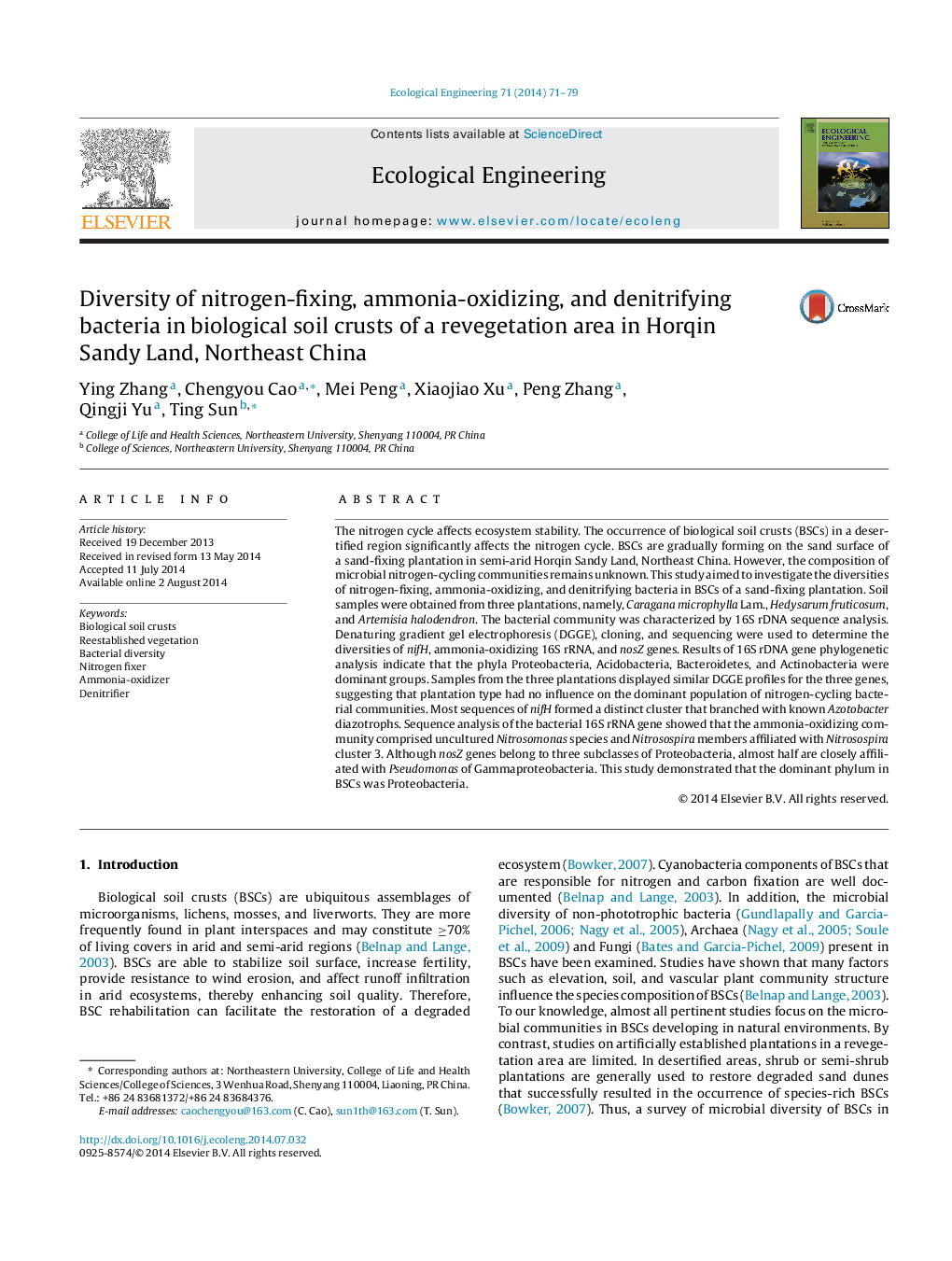| Article ID | Journal | Published Year | Pages | File Type |
|---|---|---|---|---|
| 4389139 | Ecological Engineering | 2014 | 9 Pages |
Abstract
The nitrogen cycle affects ecosystem stability. The occurrence of biological soil crusts (BSCs) in a desertified region significantly affects the nitrogen cycle. BSCs are gradually forming on the sand surface of a sand-fixing plantation in semi-arid Horqin Sandy Land, Northeast China. However, the composition of microbial nitrogen-cycling communities remains unknown. This study aimed to investigate the diversities of nitrogen-fixing, ammonia-oxidizing, and denitrifying bacteria in BSCs of a sand-fixing plantation. Soil samples were obtained from three plantations, namely, Caragana microphylla Lam., Hedysarum fruticosum, and Artemisia halodendron. The bacterial community was characterized by 16S rDNA sequence analysis. Denaturing gradient gel electrophoresis (DGGE), cloning, and sequencing were used to determine the diversities of nifH, ammonia-oxidizing 16S rRNA, and nosZ genes. Results of 16S rDNA gene phylogenetic analysis indicate that the phyla Proteobacteria, Acidobacteria, Bacteroidetes, and Actinobacteria were dominant groups. Samples from the three plantations displayed similar DGGE profiles for the three genes, suggesting that plantation type had no influence on the dominant population of nitrogen-cycling bacterial communities. Most sequences of nifH formed a distinct cluster that branched with known Azotobacter diazotrophs. Sequence analysis of the bacterial 16S rRNA gene showed that the ammonia-oxidizing community comprised uncultured Nitrosomonas species and Nitrosospira members affiliated with Nitrosospira cluster 3. Although nosZ genes belong to three subclasses of Proteobacteria, almost half are closely affiliated with Pseudomonas of Gammaproteobacteria. This study demonstrated that the dominant phylum in BSCs was Proteobacteria.
Related Topics
Life Sciences
Agricultural and Biological Sciences
Ecology, Evolution, Behavior and Systematics
Authors
Ying Zhang, Chengyou Cao, Mei Peng, Xiaojiao Xu, Peng Zhang, Qingji Yu, Ting Sun,
